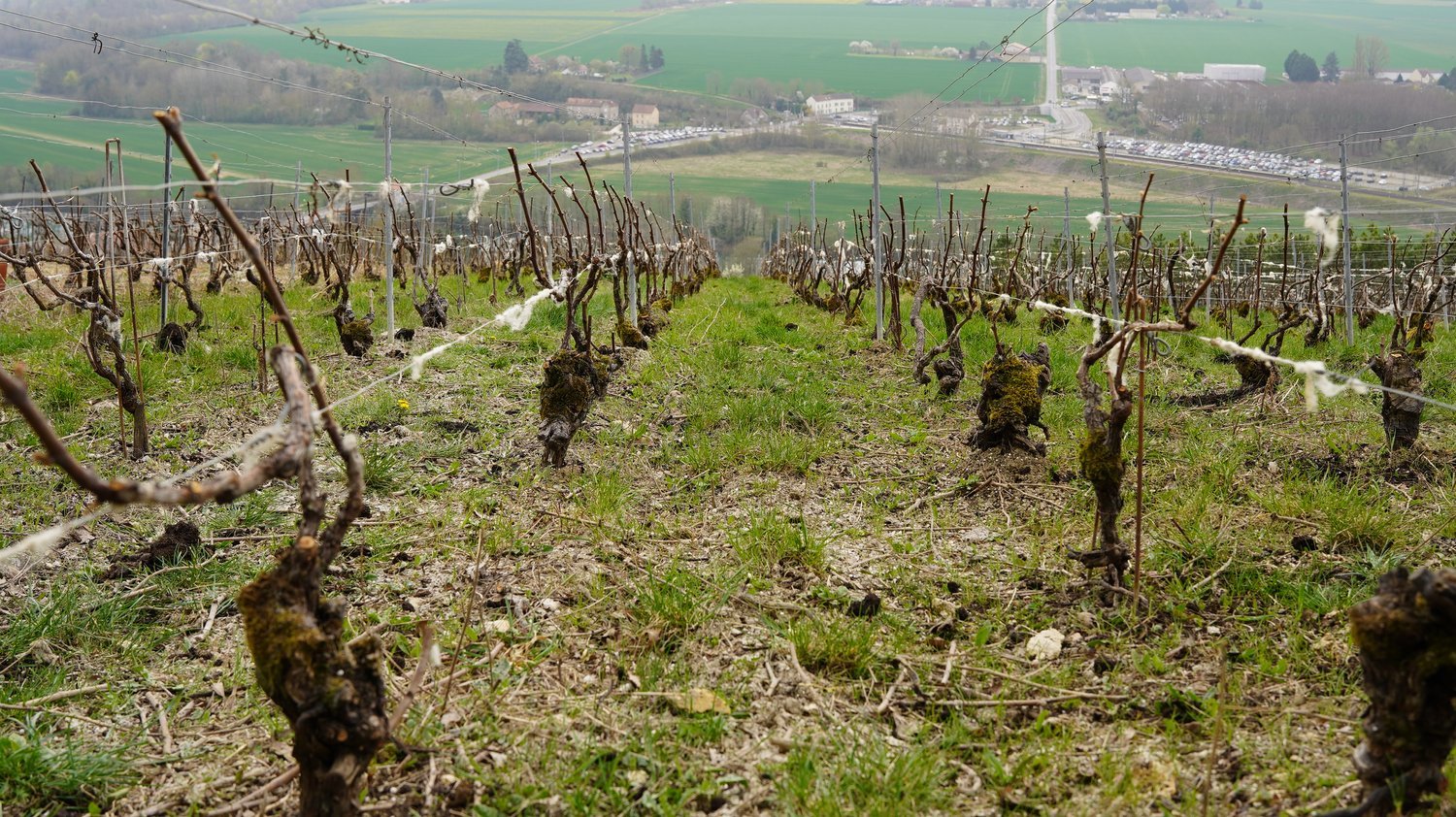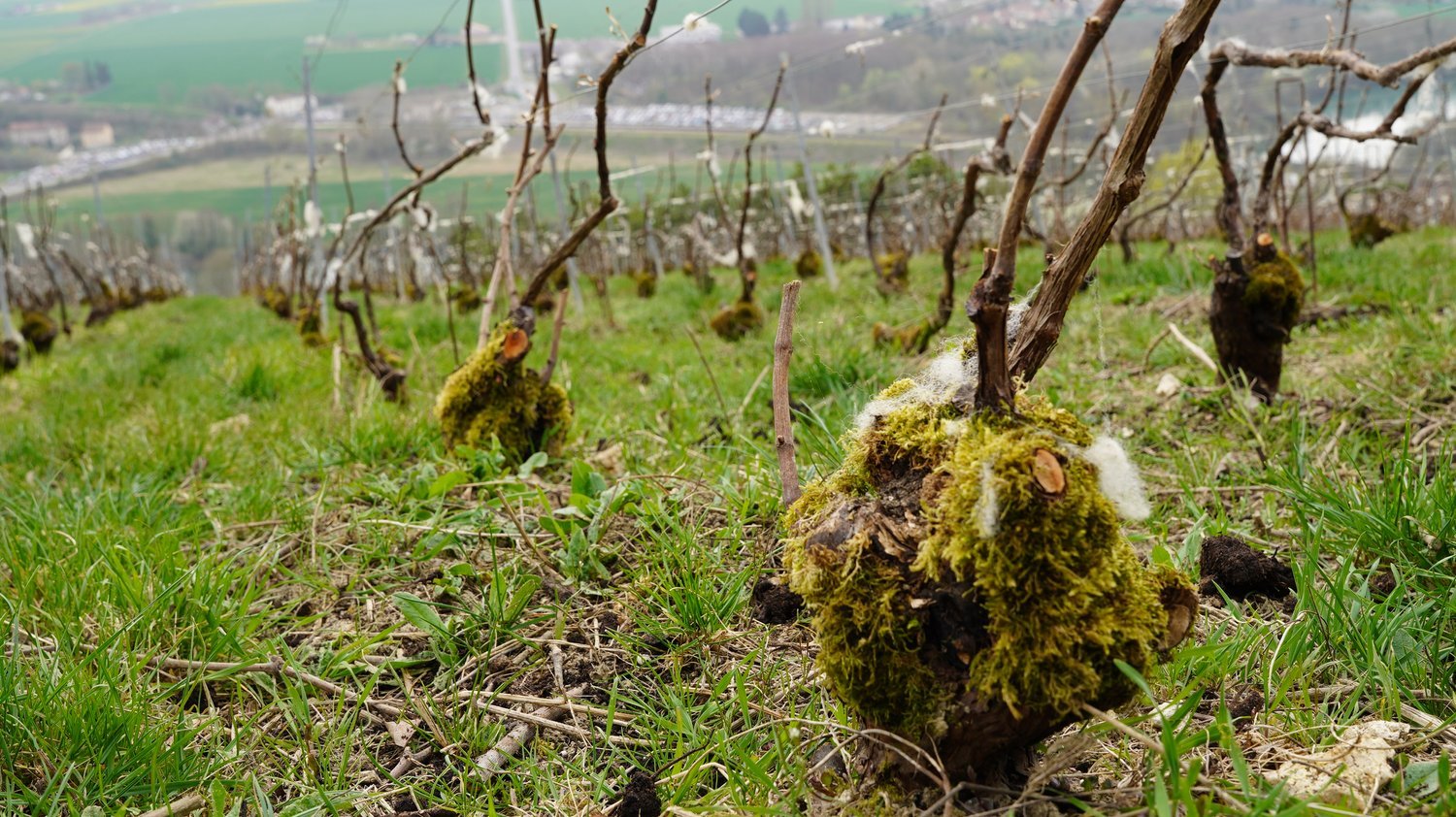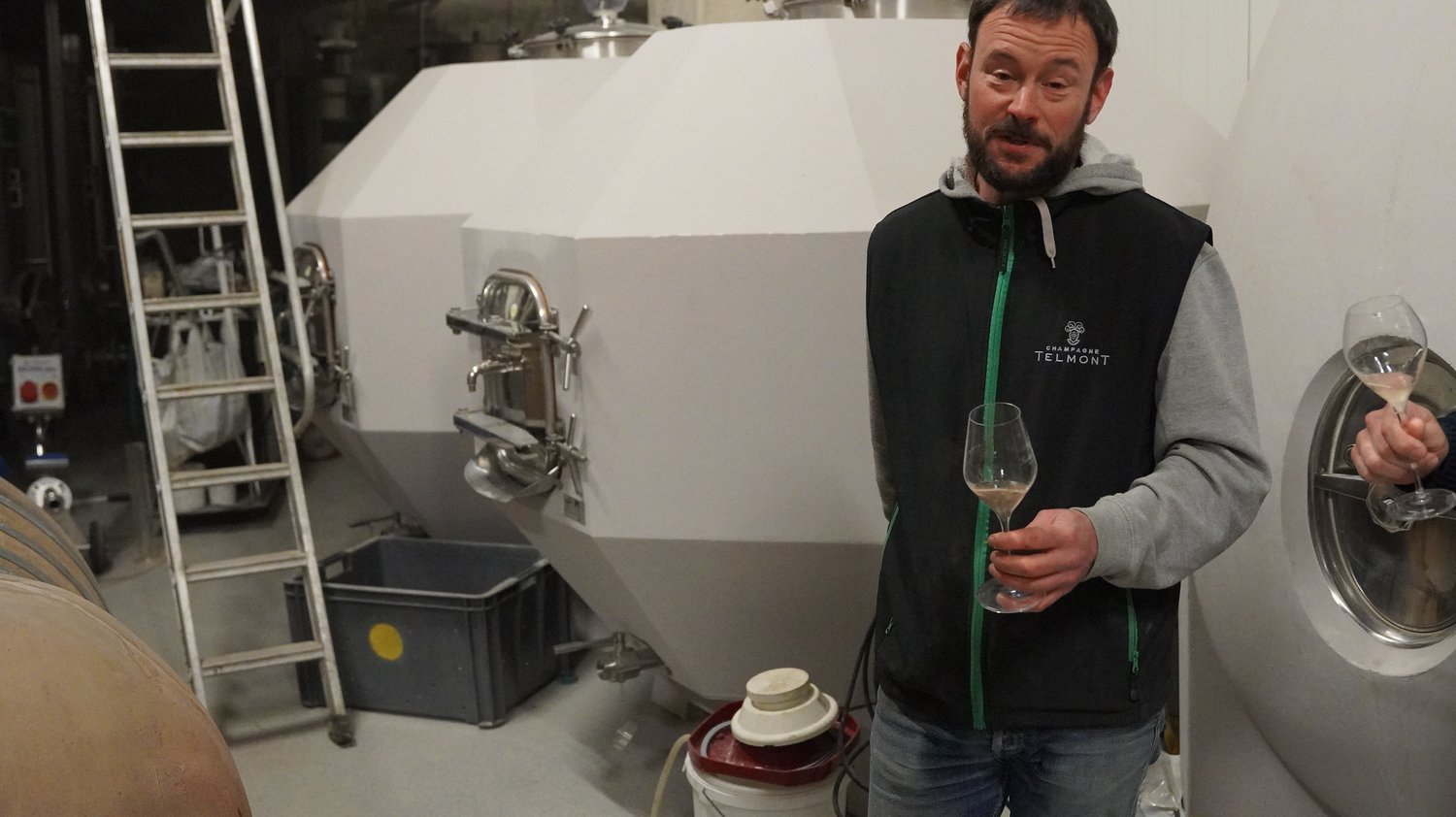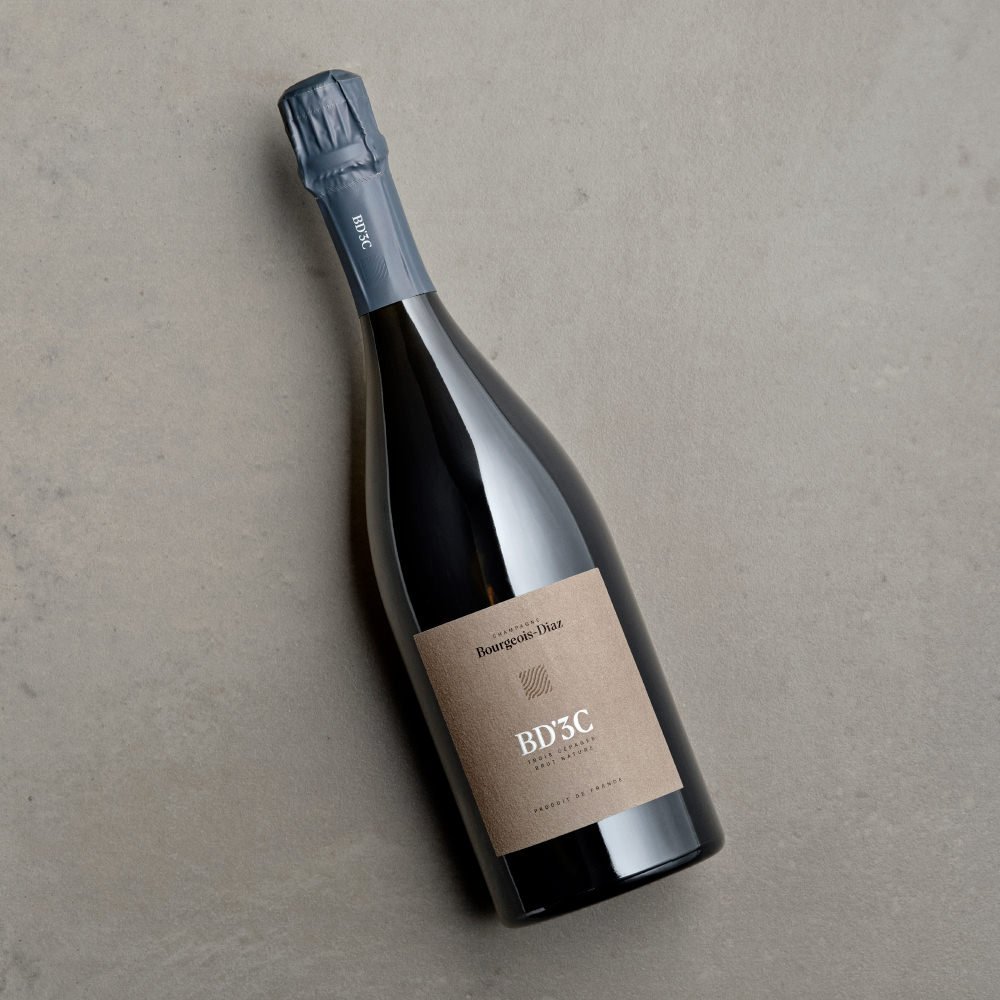Bourgeois-Diaz
Vallée de la Marne, Champagne
Jérôme Bourgeois-Diaz has been making some of the most compelling Champagnes in Crouttes-sur-Marne, situated at the extreme west end of the Marne Valley. He tends to 7 hectares of Pinot Noir, Pinot Meunier, Chardonnay and Pinot Blanc vines averaging 40 years of age, scattered over 30 sites established on the most complex terroirs, which have been kept unspoiled for 4 generations.
Crouttes-sur-Marne and adjacent communes grow the fruit dedicated to the Bourgeois-Diaz wines. Vines are planted on calcareous soil, where they enjoy a south-western exposure. Jérôme has always tended to the vines with utmost care. The fruit is subject to a very selective process and only the best parcels are vinified.
2009 marked a turning point in the domain’s history, when Jérôme decided to convert to organic and biodynamic viticulture. He favours micro ferments from each individual site to reflect reach terroir’s potential. Today, he is fully committed to biodynamic farming, meaning herbicides, fungicides and all other chemical sprays are strictly proscribed in his certified Demeter vineyard. Indeed, his vineyards stand out as an oasis of life in an otherwise conventionally farmed area. This philosophy extends to the cellar, where the traditional Coquard Champagne press is his pride and joy.
The Bourgeois-Diaz wines combine Jérôme’s astuteness in the art of Champagne making with his experimental streak, and his deep-seeded understanding of the vines and the ecosystem surrounding them. They are the incarnation of pure elegance and intrigue.
NV Champagne Trois Cepages ‘BD'3C’ Brut Nature
As far as classics go, this Champagne is a masterclass in “three cépages” represented at their best. Seemingly a little austere at first, it’s full of surprise with juicy fruit and an earthiness that’s at once deep and light. Indeed, you’ll appreciate the mature sophistication, spice, and energy that only a Champagne drinkers’ Champagne can offer.
Winemaking:
The Bourgeois-Diaz Brut Nature is made of 3 varieties (‘cépage’ in French) Pinot Meunier (40%), Pinot Noir (40%) and Chardonnay (20%). The grapes were harvested from estate plots, together. Part of it was fermented in stainless steel (40%), in oak (30%) and in concrete (30%). The wine was aged on lees for 24 months. It is a brut nature, meaning it had no dosage.
NV Champagne Blanc de Noirs ‘BD'N’ Brut Nature
This Champagne is all about transparency, freshness and power, making it a gastronomic pairing go-to. Pinot Noir and Pinot Meunier display the full red fruit spectrum, complemented by subtle oak and lees derived characters for extra class, complexity and long-lasting texture.
Winemaking:
The Champagne BD’N Blanc de Noirs is made of Pinot Meunier (70%) and Pinot Noir (30%) grapes grown on clayey-calcareous soil. The juice was partly fermented in stainless steel (50%) and in oak (50%). The wine was aged on lees for 30 months. It is a brut nature, meaning it had no dosage.
NV Champagne ‘BD'M’ 100% Meunier
This is a dry and delicate Blanc de Noirs made from the ripest Pinot Meunier. The fruit is handled most carefully to maximise its aromatic and flavour appeal. It’s juicy, incredibly approachable, quite versatile, and everlasting on the palate, like a never-ending aperitif on a sunny afternoon.
Winemaking:
The Champagne BD’M is made of 100% Pinot Meunier grapes harvested from the best and oldest plots. One was planted in 1960 and the other in 1925 on loamy soils. The grapes were pressed and the juice was partly fermented in stainless steel (45%), in oak (25%) and in concrete (30%). The wine was aged on lees for 30 to 36 months. It is a brut nature, meaning it had no dosage.
”In the far reaches of the western Marne, this strikingly accomplished cuvée is assembled from three parcels of Demeter-certified biodynamic vines in the 2017 harvest. The wine was disgorged in September of 2019 and finished without dosage. The impression is strikingly clean, with pure floral notes and a lovely citrus/apricot fruit character. There is little toasty character but a refreshingly crisp texture and a vibrant feel on the palate.” 92 pts. Charles Curtis, Decanter
NV Champagne Rosé Saignée ‘BD'RS’ Brut Nature
Crouttes sur Marne and adjacent communes grow the fruit dedicated to the Bourgeois-Diaz wines. Vines are planted on calcareous soil, where they enjoy a south-western exposure. Jérôme has always tended to the vines with utmost care. The fruit is subject to a very selective process and only the best parcels are vinified.
This Champagne has for base a “rosé de saignée”, produced from Pinot Meunier grapes that have been bled-off their blushed colour. The resulting Champagne is intensely coloured, powerful, and fruity, akin to a red wine, even. It shines on its own or with red meat and tomato-based dishes.
Winemaking:
The Champagne BD-RS Rosé is made of 100% Pinot Meunier grapes harvested from two plots. One was planted in 1960 and the other in 1925 on loamy soils. The grapes were macerated for 22 hours, then pressed and partly fermented in stainless steel (80%) and in oak (20%). It is a brut nature, meaning it had no dosage.
NV Champagne Le Temple Blanc de Blancs ‘BD’B’ Brut Nature
This Champagne is fashioned on the banks of the still Marne River, grown on vines edged into clay, silt and chalk, without pesticides (since 2009), and certified organic and biodynamic since 2014. This is perhaps the purest expression of Chardonnay grown on Le Temple, a single plot worshipped like Nature’s temple. Here you have the finesse of Chardonnay presented in an ample style, with a surprising tension and a fine bitter tang.
Winemaking:
The Champagne BD’B Blanc de Blancs is made of 100% Chardonnay grapes harvested from a ‘lieu-dit’ called “Le Temple”, which boasts a unique calcareous marl soils. The juice was partly fermented in stainless steel (66%) and partially in neutral oak (34%). The wine was aged on lees for a minimum of 24 months. It is a brut nature, meaning it had no dosage.
2016 Champagne Trois Cepages Collection ‘BD’3CC’ Brut Nature
This wine is the culmination of years spent perfecting a blend of three noble Champagne grapes, selecting the best barrels from a single vintage. The result is enthralling, capable of rivalling the best still wines on the table. With Chardonnay forming the core, Pinot Noir, and a splash of Pinot Meunier, it shows great cellaring potential and a longer-than-average maturation (60 months) confers it enormous complexity doubled with freshness and presence.
Winemaking:
The Champagne BD’3CC is made of 3 varieties (‘cépage’ in French) Chardonnay (40%), Pinot Noir (40%) and Pinot Meunier (20%). The grapes were harvested from estate plots in 2015, together. Part of the juice was fermented in stainless steel (50%) and oak (50%). The wine was aged on lees for up to 60 months. It is a brut nature, meaning it had no dosage.
2017 Champagne 100% Meunier Les Justices
This is the first of the two Bourgeois-Diaz Champagnes designed to highlight two of the most emblematic terroirs of the estate. A Pinot Meunier Blanc de Noirs, it comes from a vineyard planted in 1963 using “sélection massale” to select and propagate only the best performing vines from the previous vineyard and neighbouring ones. This is not for the faint hearted, but rather for those who rate structure in a profoundly vinous Champagne.
Winemaking:
The base wine (from 2017) was aged in concrete tanks and the second fermentation occurred under natural cork, not crown cap, for 42 months. The resulting Champagne is artisanal and as natural as can be.
2017 Champagne 100% Pinot Noir Les Bien Aimees
As the second of the two Bourgeois-Diaz Champagnes designed to highlight two of the most emblematic terroirs of the estate, Les bien aimées Pinot Noir based Blanc de Noirs, comes from a vineyard situated in Nanteuil-sur-Marne, planted in 1963 using “sélection massale” to select and propagate only the best performing vines from the previous vineyard and neighbouring ones.
Winemaking:
The base wine (from 2017) was aged in concrete tanks and the second fermentation occurred under natural cork, not crown cap, for 42 months. The resulting Champagne is artisanal and as natural as can be.
















